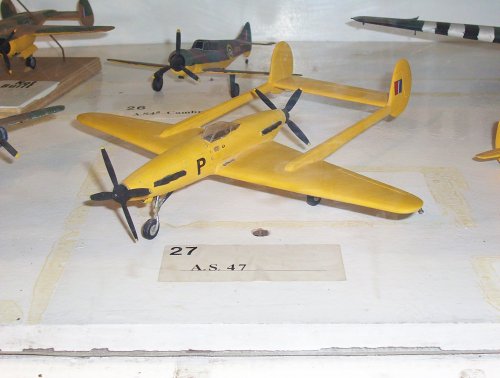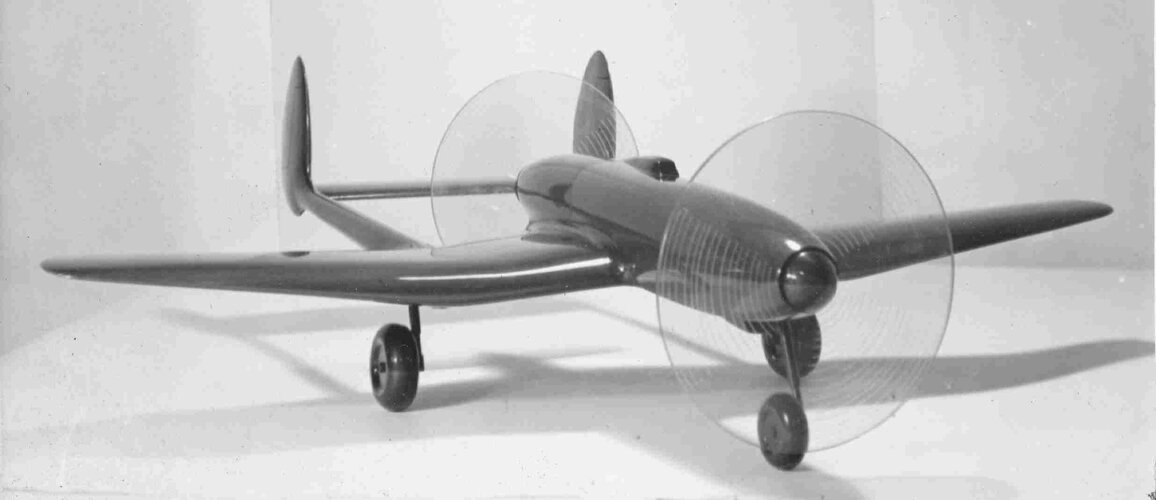ChuckAnderson
ACCESS: Confidential
- Joined
- 10 May 2006
- Messages
- 188
- Reaction score
- 42
Hi Everyone!
First, my apologies if the attachment I sent with this message didn't come through, (though I had to try doing this at least once to see if I could do it at all!) I'll try it again if I don't get it right,
Anyway... here's a written description of the Airspeed A.S. 47:
"The A.S.47 was a twin-boom, twin-fin device with a wide-track tricycle undercarriage, but otherwise somewhat reminiscent of the Fokker D.XXIII in that it had tractor and pusher engines with, between them, the crew of pilot and bomb-aimer/navigator. The pilot's cockpit, with its windscreen and canopy, was offset slightly to the port side of the nacelle, and the bomb-aimer was accomodated to his right and below. No doubt means had been considered of abandoning the aircraft in emergency, but on the face of it the crew did not seem to have much chance unless the pusher propeller could somehow have been jettisoned by explosive means. The estimated performance was, however, attractive."
"A.S.47, Span 58 ft (17.68 m); length 53 ft 9 in (16.38 m), Maximum speed at 18,500 ft (5,638 m) 470 mph (756 kn/h). Range 1,000 miles (1,610 km) with 1,000 lb (454 kg) warload."
SOURCE (For text and illustration):
Airspeed Aircraft since 1931 by H.A. Taylor
pp. 160-162 Published by: Putnam Aeronautical Books
Copyright: H.A. Taylor, 1970
Chuck Anderson
First, my apologies if the attachment I sent with this message didn't come through, (though I had to try doing this at least once to see if I could do it at all!) I'll try it again if I don't get it right,
Anyway... here's a written description of the Airspeed A.S. 47:
"The A.S.47 was a twin-boom, twin-fin device with a wide-track tricycle undercarriage, but otherwise somewhat reminiscent of the Fokker D.XXIII in that it had tractor and pusher engines with, between them, the crew of pilot and bomb-aimer/navigator. The pilot's cockpit, with its windscreen and canopy, was offset slightly to the port side of the nacelle, and the bomb-aimer was accomodated to his right and below. No doubt means had been considered of abandoning the aircraft in emergency, but on the face of it the crew did not seem to have much chance unless the pusher propeller could somehow have been jettisoned by explosive means. The estimated performance was, however, attractive."
"A.S.47, Span 58 ft (17.68 m); length 53 ft 9 in (16.38 m), Maximum speed at 18,500 ft (5,638 m) 470 mph (756 kn/h). Range 1,000 miles (1,610 km) with 1,000 lb (454 kg) warload."
SOURCE (For text and illustration):
Airspeed Aircraft since 1931 by H.A. Taylor
pp. 160-162 Published by: Putnam Aeronautical Books
Copyright: H.A. Taylor, 1970
Chuck Anderson





